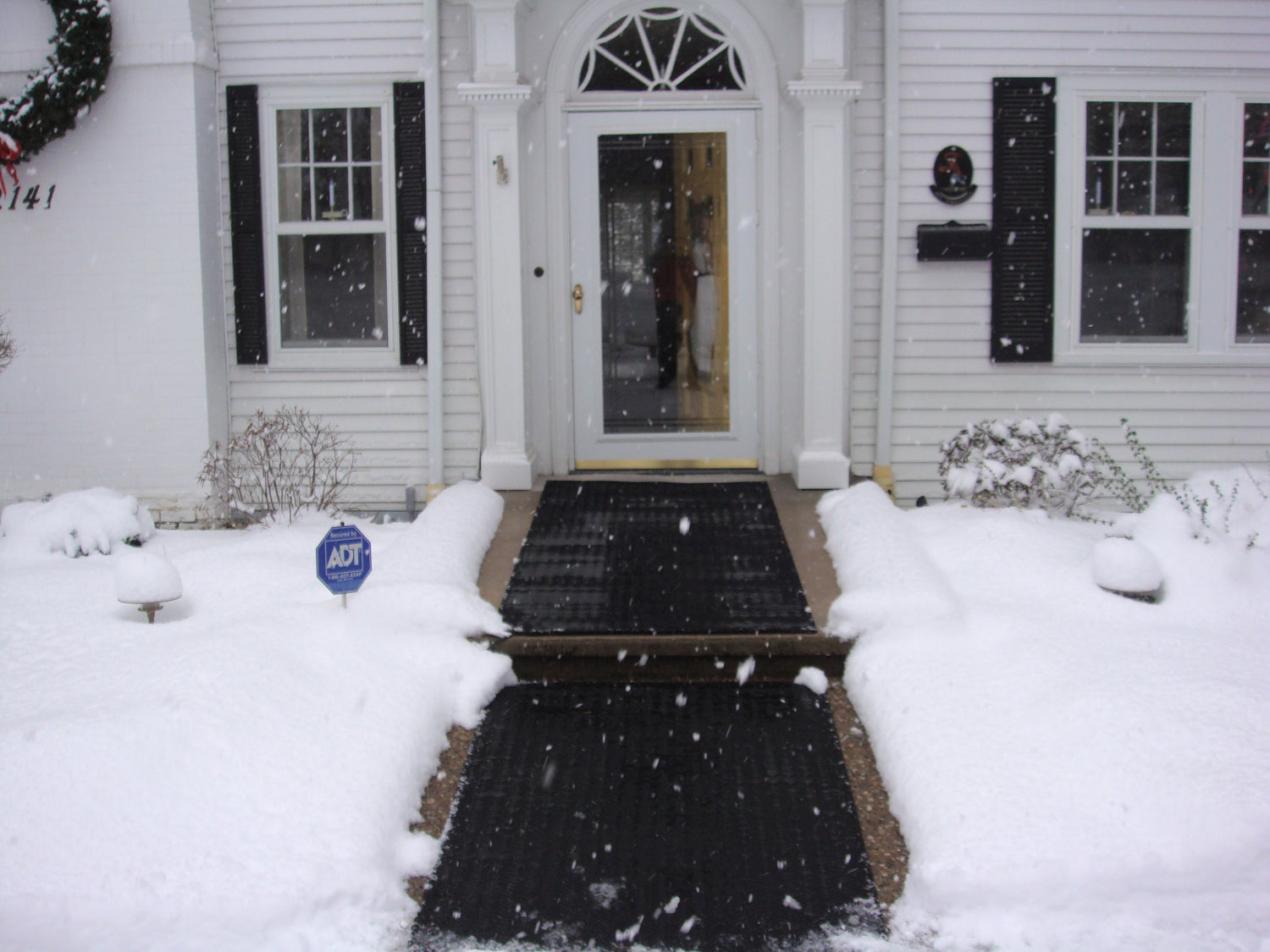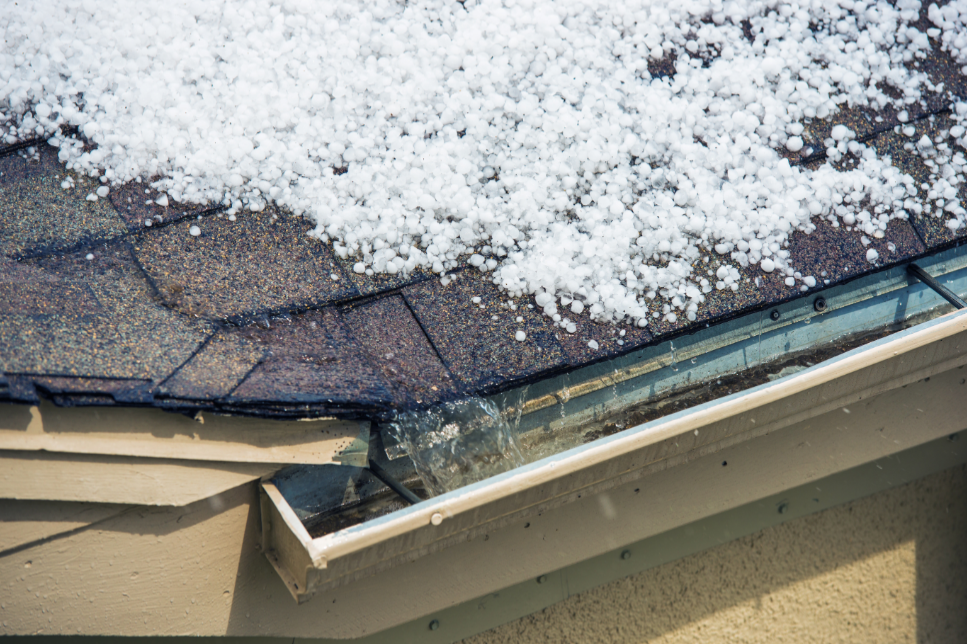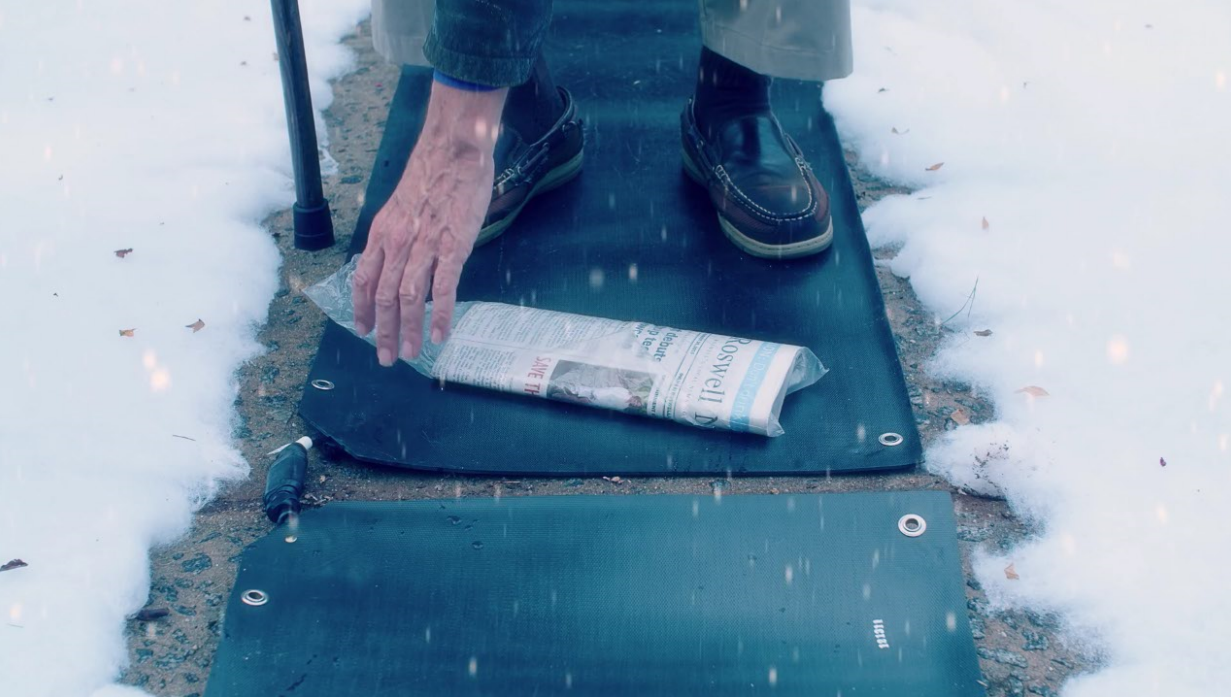
As faithful blog readers know, we like to talk about anything and everything under the winter sun--how to prepare your home for winter, health concerns related to shoveling, hazards that the elderly should avoid in winter, etc.
But as winter approaches ever closer, and customers start getting serious about snow removal, we’ve been getting a lot of great questions about HeatTrak mats.
So today I want to delve into some of those, and address some of the key questions and comments we get here at HeatTrak headquarters, just to clarify some information about the mats.
1) Will HeatTrak mats cause an exorbitant electricity bill?
While the cost to operate the HeatTrak mat depends on the size of the mat, the average cost is roughly equivalent to running 4 - 5 household light bulbs. The walkway mats are 300 watts each, which costs about only 3.5 cents (approximately $0.05 CAD) an hour to operate. The stair treads are smaller and thus cheaper--each tread costs only about half a cent per hour, making a string of 10 stair treads equivalent to about 5 cents (approximately $0.07 CAD) an hour to operate.
It’s also important to remember that while the mats can be left out all winter, they don't have to be left on--you just turn them on before it starts to snow. So let’s say you’re running 10 stair treads and 2 walkway mats for 4 - 6 hours on a snow day; it would only cost about $0.48 - $0.72 (approximately $0.64 - $0.96 CAD) in electricity. That's LESS THAN ONE DOLLAR PER SNOW DAY.
2) Will HeatTrak mats work even in extreme snow conditions?
The NOAA defines 'heavy snow' as flakes falling at a 1" (2.54 cm) per hour. HeatTrak mats melt snow at 2" (5 cm) per hour, accounting for even the heaviest storms.
3) Can the residual water from snow melt cause a hazard?
If you turn on HeatTrak mats before the snow starts to fall, there won't be any water accumulation when the snow melts, because the snowflakes will evaporate as soon as they land on the mat.
If you turn on the mats after the snow starts to fall, give it a few hours to melt through the accumulated snow. There will then be a slight water run-off, but it will go under the snow that surrounds the mat. Also, there will be small puddles on the mat until the water completely evaporates, but they'll be beneath the non-slip treading, so there won't be any slip hazard. Eventually, all the water will evaporate.
4) Can HeatTrak mats be driven on?
While it's true that products in our residential line can't be driven on, our line of heated driveways mats and our commercial mats work great on driveways. They are larger than the residential size, so will cover the larger area, and can stand up to your vehicle.
5) Do HeatTrak mats come with a warranty?
In our 12 years of existence, HeatTrak has served over 30,000 happy customers with mats that last for an average of 4 - 5 years, depending on foot traffic and our recommendations for best usage. But should there be any sort of problem, every HeatTrak product comes with a 2-year manufacturer's warranty. You just need to call customer service at 888-586-4904, extension 3.
6) Are HeatTrak mats bad for the environment?
We’ve heard this question largely in conjunction with the first misconception, about high energy costs, and we’ve cleared that up. But further, mats are great for the environment because they reduce the need for snow-removal chemicals like deicing salt, which is corrosive and can damage concrete, paving, and interior flooring when shoes carry it inside. It can also lodge in the paws of pets, causing a painful burning sensation.
7) Are HeatTrak mats dangerous?
I know--it seems like electrical mats and melting snow aren’t exactly a great fit. But the mats are incredibly safe. If they weren’t, we’d be out of business a long time ago :) The mats are built and tested according to the UL standard 499, and carry the mark of the TUV. This nationally recognized standard requires that HeatTrak products incorporate the highest degree of electrical safety, particularly around wet environments.
One such requirement in the standard requires that our products must contain a Ground Fault Circuit Interrupter (GFCI) below the plug. This GFCI will instantaneously shut off all power to the mat if it detects a current leakage of more than 6mA. So for example, should there ever be a cut in the mat that could potentially cause harm, the GFCI will detect it and shut it down.
8) Will HeatTrak Mats wear out if I leave them out for the entire winter?
Nope--in fact the mats are designed to be left out all winter. The mats are made of customized thermoplastic material. There are electrically operated heating elements sandwiched between two protective surfaces of this non-slip thermoplastic material, making them as durable as automobile tires and allowing them to endure harsh wear.
I hope this clears up some of the questions that have come across our desks.
Have a question we didn’t answer? Feel free to check out our full list of FAQs or email us at questions@heattrak.com.



